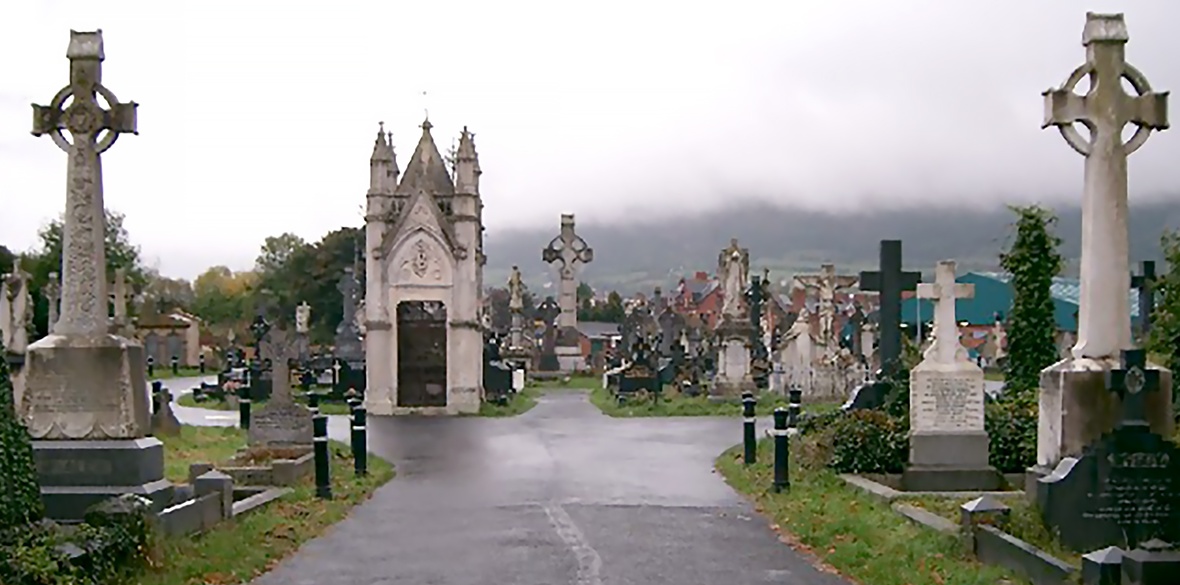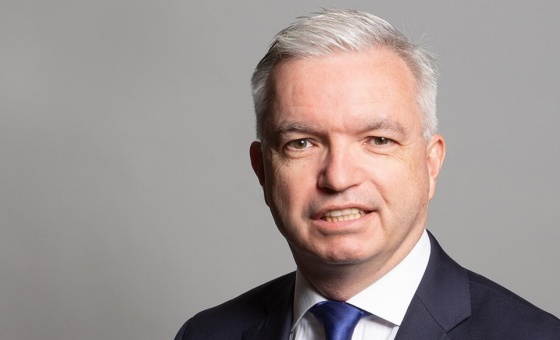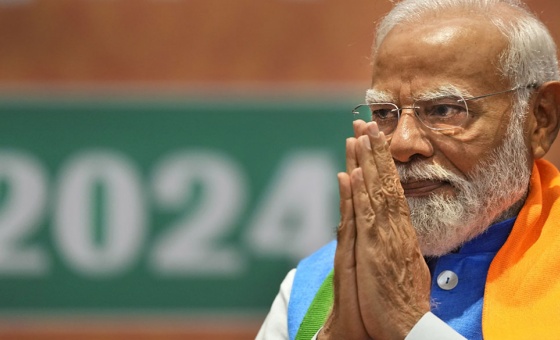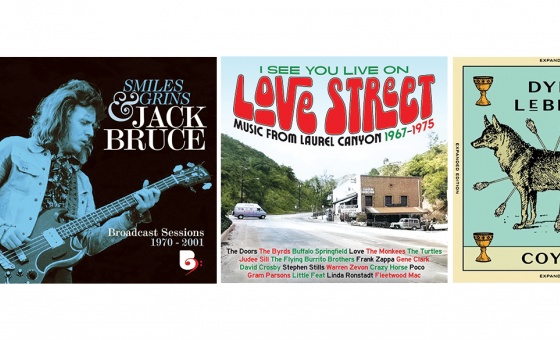This is the last article you can read this month
You can read more article this month
You can read more articles this month
Sorry your limit is up for this month
Reset on:
Please help support the Morning Star by subscribing here
MILLTOWN cemetery in West Belfast holds a vast array of graves where you will find poets to patriots and everyone inbetween.
There is one grave in this necropolis of an innocent family who were murdered by police in their home on the night of March 24 1922.
A tall, high cross marks the final resting place of members of the McMahon family who fell victim to the dark deeds of a sectarian state 100 years ago today.
Following the partition of Ireland and the Anglo-Irish Treaty of 1921 which ended the Irish war of independence, a civil war erupted in the south of Ireland between those who supported and those who were against the terms of the treaty with Britain.
In the partitioned six counties in the north of Ireland, a series of pogroms occured.
It saw those mostly from Catholic nationalist areas become a target of loyalist mobs and the police, such as the McMahons — a middle-class Catholic family in Belfast.
Fifty-five-year-old Owen McMahon came from a Co Down farming family. He moved to Belfast city where he got involved in the pub trade and served as chairman of the Northern Vintners Association.
He was the proprietor of the Capstan pub on Belfast’s Ann Street and played a big role in the sporting life of the community. Owen was director of Glentoran Football Club and president of the Ivy Cycling Club.
The McMahons were not politically active and were well-liked across the religious divide.
Owen married, had six sons and one daughter and lived in a fine abode in north Belfast and was a respected member of the community, but it all came to a bloody end on a dark March night in 1922.
At the end of business on the night of March 23, McMahon and his bar manager Edward McKinney, who lodged with the McMahons, made their way home to 3 Kinnaird Terrace, part of row of tall red-brick Victorian houses off Thorndale Avenue in north Belfast.
Just after 1am two masked members of the dreaded B Specials unit stopped a watchman at a building site at Carlisle Circus and ordered him to hand over a sledgehammer.
From there they made their way up Crumlin Road and onto Clifton Park Avenue. There they entered Bruces Demense, where they met three fellow B Specials.
The B Specials were a unit within the Royal Irish Constabulary, later renamed the Royal Ulster Constabulary.
The B Specials were notoriously anti-Catholic, anti-nationalist and many were members of the Orange Order. They remained active until 1970.
The group went to the McMahon home and smashed in the door with the sledgehammer waking up its occupants.
The masked intruders ordered the terrified occupants to split into two groups, females were ordered into the back room while males were rounded up in the parlour.
Eliza McMahon, her young daughter and niece were locked into the back room while her husband, sons and Edward McKinney were gathered at gunpoint in the parlour.
Within seconds the parlour was lit up with gunfire as a barrage of bullets sprayed the men in their night clothes.
The youngest of Owen McMahon’s sons was 12-year-old Michael. He managed to run under the dining-room table as the masked men unleashed their gunfire.
Bullets destined for the petrified lad ricocheted off the table and into the wall. He was able to scramble his way to safety by hiding under an large armchair.
With their murderous deed carried out, the masked men simply strolled out of the house and into the night.
Neighbours who heard the awful sounds of shooting and screaming arrived at the scene to see bodies scattered about the parlour, blood dripping from walls and pools of it on the floor.
One neighbour later described the scene to a newspaper as being like a slaughterhouse.
The ambulance corps were called but for Edward McKinney it was too late, the Donegal native was already dead. As was 15-year-old Gerard McMahon and his older brothers 22-year-old Patrick and 24-year-old Frank.
Another sibling, 26-year-old Bernard lingered until April 2. Owen McMahon was still alive when the ambulance arrived and held onto life until 7am.
The eldest of the McMahon sons, 30-year-old John, was shot several times but survived. Neighbours found 12-year-old Michael quivering in fear under the armchair and splattered in the blood of his family members.
The funeral of Owen McMahon and his sons drew thousands to the streets of Belfast as the procession made its way from St Patrick’s church to Milltown cemetery.
Eliza McMahon, who had suffered terrible shock and was recovering in hospital, was assisted from the hospital to the funeral. She was accompanied by her last surviving son Michael and daughter Lily.
It proved too much for young Michael, who had to be helped away from the graveside when he collapsed in utter grief as his father and brothers were laid down to their eternal rest.
On the same day as the McMahon funeral in Belfast, Edward McKinney was laid to rest in Cockhill cemetery in his hometown of Buncrana, Co Donegal. That funeral also drew thousands of mourners.
Michael and John McMahon were able to describe those who carried out the brutal murders in their home.
John stated that four of the five masked men wore RIC (police) uniforms, one was in civvies. John told how the man in plain clothes had ordred the McMahon men and boys, and their lodger, to line up against the wall in the parlour and informed them “You boys say your prayers now.” That man then fired the first volley.
The murders caused widespread outrage. Michael Collins secretly had his informer in the Belfast RIC, Constable Furlong, to supply him with the names of those involved.
It was his plan to then execute them but, a civil war between the IRA and Collins’s Free State Army erupted in the south of Ireland and by August of 1922 Collins was dead following an ambush in his native Co Cork and his style of “justice” was never delivered to those who had carried out the McMahon murders.
It transpired that anti-Catholic anti-nationalist murder gangs known as Cromwell Clubs operated across Belfast and beyond. RIC County Inspector Harrison and District Inspector Nixon were just two of those involved in these murder clubs.
Many other policemen were also members of Cromwell Clubs and their aim was to retaliate against Catholic civilians whenever there was an IRA attack.
No-one was ever arrested for the McMahon Murders. In 1923, a year after the murders, district inspector Nixon was awarded Member of the Order of the British Empre (MBE).
By 1924 he had retired from the police and was elected to Belfast Corporation as an Independent Unionist and later elected an MP.
He died in 1949, denying involvement in the killings of Catholics across Belfast, including the McMahons.
After the McMahon murders RIC County Inspector Harrison was appointed city commissioner and enjoyed a long life, dying in his sleep at his home in Belfast in 1982 at the age of 99. Like Nixon, he too denied being part of police murder clubs.
The barbaric slaughter at the McMahon home was just one in a series of reprisals on Catholics and nationalists.
Just a week after the McMahon murders, the Arnon Street incident occured which saw five innocent Catholics killed by the police.
For the unfortunate McMahon family life was never the same again. Eliza McMahon, her daughter and son Michael left Belfast for Dublin while John McMahon went to London.
The reign of terror conducted by those who were supposed to protect civilians cast a dark shadow over Belfast. Such evil deeds only served to strengthen the sectarian divide and, for the McMahons, their only crime was that they were a well-liked and respected Catholic family.











